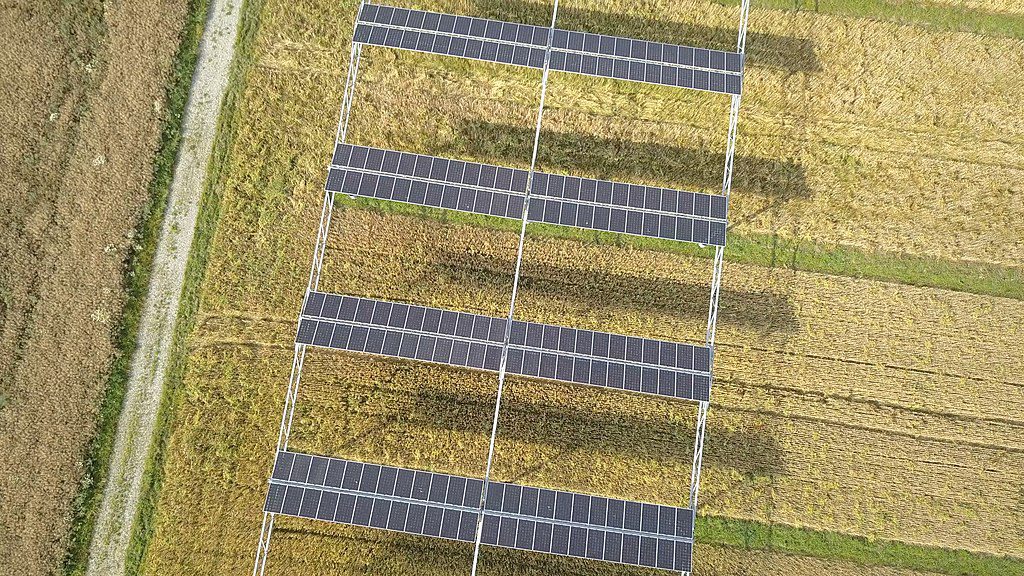The following is an excerpt. Read the full article on Resilience.org.
Using the same land for the production of both agriculture and solar energy is a win-win for the climate and farmers.
By Tina Casey
Access to solar power is increasing in rural parts of the U.S., partly with the support of farmers who lease out their land for utility-scale solar arrays. This farm-to-solar trend known as “agrivoltaics”—defined by the U.S. Department of Energy (DOE) as “the co-location of agricultural production and solar energy generation on the same land”—is intertwined with regenerative farming, a trend that has centuries-old roots within Indigenous cultures. This mindful cooperation between farming and energy poses a threat to the status quo fueling climate change and is facing a surge of opposition, but the emerging field of agrivoltaics could help neutralize the critics and break down barriers to solar development.
The Importance of Rural Solar
Leasing out land for a utility-scale solar array can provide farmers with an important source of steady revenue. The income can be a lifeline for individual farmers, and for entire industries. Solar leasing, for example, is credited with helping to sustain the cranberry industry in Massachusetts.
“[R]ural communities have a significant opportunity to strengthen and diversify their local economies by embracing and actively engaging in the ongoing renewable energy transition,” wrote Katie Siegner, Kevin Brehm, and Mark Dyson, authors of a 2021 report published by Rocky Mountain Institute, a nonpartisan nonprofit organization working to accelerate the clean energy transition.
“By 2030, renewable energy capacity in the United States will at least double, and potentially grow by a factor of seven or higher if new policies are enacted to capitalize on continuing cost declines in wind and solar,” they wrote. “As a result, rural communities—which host 99 percent of onshore wind and a growing share of utility-scale solar projects—stand to receive a sizable boost to their local economies. In fact, annual revenues from wind and solar projects could exceed $60 billion… by 2030—on par with expected revenues from the top three U.S. agricultural commodities: corn, soy, and beef production.”
Bringing more solar energy to rural communities is a priority for the Biden administration with a focus on improving solar access for underserved low- and middle-income communities. Among other provisions, Biden’s 2024 budget proposal specifies $30 million in grants and $1 billion in loan guarantees for solar, other clean energy systems, and energy efficiency improvements for farmers and small businesses in rural communities, along with $15 million toward the creation of a new Rural Clean Energy Initiative tasked with helping electricity providers meet clean energy goals.
Helping rural businesses reduce their dependence on fossil fuels is another priority for many federal policymakers. In the U.S., the funding sources include the U.S. Department of Agriculture’s (USDA) Rural Energy for America Program (REAP), which was created through the 2008 Farm Bill to support energy efficiency upgrades as well as solar and other renewables on farms, including utility-scale projects.
Tina Casey has been writing about sustainability, the global energy transition, and related matters since 2009. She is a regular contributor to the Observatory, CleanTechnica, and TriplePundit, where she also focuses on corporate social responsibility and social issues.
